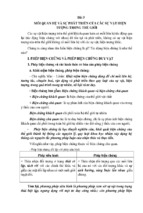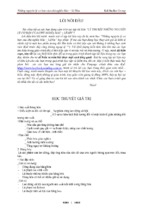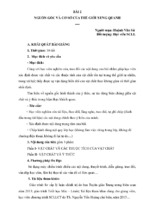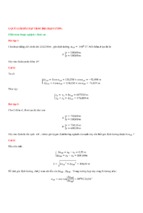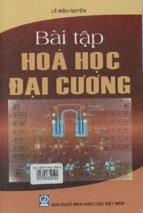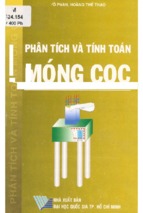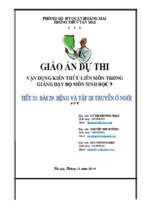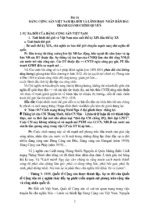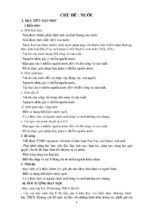scelibrary.org by RMIT UNIVERSITY LIBRARY on 01/03/19. Copyright ASCE. For personal use only
ICCREM
2017
Industry Regulation and
Sustainable Development
Edited by Yaowu Wang
Yongshi Pang
Geoffrey Q. P. Shen
Yimin Zhu, Ph.D.
Downloaded from ascelibrary.org by RMIT UNIVERSITY LIBRARY on 01/03/19. Copyright ASCE. For personal use only; all rights reserved.
ICCREM 2017
INDUSTRY REGULATION AND SUSTAINABLE DEVELOPMENT
PROCEEDINGS OF THE INTERNATIONAL CONFERENCE ON
CONSTRUCTION AND REAL ESTATE MANAGEMENT 2017
November 10–12, 2017
Guangzhou, China
SPONSORED BY
Modernization of Management Committee
of the China Construction Industry Association
The Construction Institute
of the American Society of Civil Engineers
EDITORS
Yaowu Wang
Yongshi Pang
Geoffrey Q. P. Shen
Yimin Zhu, Ph.D.
Published by the American Society of Civil Engineers
Downloaded from ascelibrary.org by RMIT UNIVERSITY LIBRARY on 01/03/19. Copyright ASCE. For personal use only; all rights reserved.
Published by American Society of Civil Engineers
1801 Alexander Bell Drive
Reston, Virginia, 20191-4382
www.asce.org/publications | ascelibrary.org
Any statements expressed in these materials are those of the individual authors and do not
necessarily represent the views of ASCE, which takes no responsibility for any statement
made herein. No reference made in this publication to any specific method, product, process,
or service constitutes or implies an endorsement, recommendation, or warranty thereof by
ASCE. The materials are for general information only and do not represent a standard of
ASCE, nor are they intended as a reference in purchase specifications, contracts, regulations,
statutes, or any other legal document. ASCE makes no representation or warranty of any
kind, whether express or implied, concerning the accuracy, completeness, suitability, or
utility of any information, apparatus, product, or process discussed in this publication, and
assumes no liability therefor. The information contained in these materials should not be used
without first securing competent advice with respect to its suitability for any general or
specific application. Anyone utilizing such information assumes all liability arising from such
use, including but not limited to infringement of any patent or patents.
ASCE and American Society of Civil Engineers—Registered in U.S. Patent and Trademark
Office.
Photocopies and permissions. Permission to photocopy or reproduce material from ASCE
publications can be requested by sending an e-mail to
[email protected] or by locating a
title in ASCE's Civil Engineering Database (http://cedb.asce.org) or ASCE Library
(http://ascelibrary.org) and using the “Permissions” link.
Errata: Errata, if any, can be found at https://doi.org/10.1061/9780784481066
Copyright © 2017 by the American Society of Civil Engineers.
All Rights Reserved.
ISBN 978-0-7844-8106-6 (PDF)
Manufactured in the United States of America.
ICCREM 2017
iii
Preface
Downloaded from ascelibrary.org by RMIT UNIVERSITY LIBRARY on 01/03/19. Copyright ASCE. For personal use only; all rights reserved.
We would like to welcome you to the 2017 International Conference on Construction and
Real Estate Management (ICCREM 2017). Harbin Institute of Technology, Guangzhou
University, Hong Kong Polytechnic University, Louisiana State University, University of
Alberta, Luleå University of Technology, Heriot-Watt University, Marquette University,
Karlsruhe Institute of Technology. The Conference is a continuation of the ICCREM
series which have been held annually since 2003.
The theme for this conference is “Prefabricated Construction and Construction
Industrialization”. It especially highlights the importance of construction industrialization
and prefabricated technology for construction engineering and management. The
conference proceedings include 174 peer-review papers covered eleven important
subjects. And all papers went through a two-step peer review process. The proceedings of
the congress are divided into four parts:
Prefabricated Buildings, Industrialized Construction and PPP
Industry Regulation and Sustainable Development
Real Estate and Urbanization
Project Management and Construction Technology
On behalf of the Construction Institute, the American Society of Civil Engineers and the
2017 ICCREM Organizing Committee, we welcome you and wish you leave with a
wonderful experience and memory at ICCREM 2017.
Professor Yaowu Wang
Professor Yongshi Pang
Harbin Institute of Technology
Guangzhou University
P. R. of China
P. R. of China
Acknowledgments
Organized by
Harbin Institute of Technology, P.R. China
Guangzhou University, P.R. China
Hong Kong Polytechnic University, P.R. China
Louisiana State University, USA
University of Alberta, Canada
Luleå University of Technology, Sweden
Heriot-Watt University, UK
Marquette University, USA
Karlsruhe Institute of Technology, Germany
© ASCE
ICCREM 2017
iv
Executive Editors
Downloaded from ascelibrary.org by RMIT UNIVERSITY LIBRARY on 01/03/19. Copyright ASCE. For personal use only; all rights reserved.
Xianfei Yin
Xianwei Meng
Zhuyue Li
Chong Feng
Wei Gao
Yuru Gao
Tingting Chen
Jia Ding
Xiangkun Qi
Yue Cao
Zixin Han
Tongyao Feng
Hongmeng Kang
Conference website: http://www.iccrem.com/
Email:
[email protected]
Conference Committee
Committee Chairs
Prof. Yaowu Wang, Harbin Institute of Technology, P.R. China
Prof. Geoffrey Q.P. Shen, Hong Kong Polytechnic University, P.R. China
Conference Executive Chair
Prof. Jiyang Fu, Guangzhou University, P.R. China
Conference Co-Chairs
Prof. Yongshi Pang, Guangzhou University, P.R. China
Director Katerina Lachinova, Construction Institute of ASCE.(ASCE members),
USA
Prof. Yimin Zhu, Louisiana State University, USA
Prof. Mohamed Al-Hussein, University of Alberta, Canada
Prof. Thomas Olofsson, Luleå University of Technology, Sweden
Prof. Ming Sun, Heriot Watt University, UK
Prof. Yong Bai, Marquette University, USA
Prof. Kunibert Lennerts, Karlsruhe Institute of Technology, German
Organizing Committee and Secretariat
General Secretariat
Prof. Xiaolong Xue, Harbin Institute of Technology, P.R. China
Deputy General Secretariat
Prof. Xuetong Wang, Guangzhou University, P.R. China
© ASCE
ICCREM 2017
v
Committee Members
Asso. Prof. Chengshuang Sun, Harbin Institute of Technology, P.R. China
Asso. Prof Qingpeng Man, Harbin Institute of Technology, P.R. China
Downloaded from ascelibrary.org by RMIT UNIVERSITY LIBRARY on 01/03/19. Copyright ASCE. For personal use only; all rights reserved.
Mr. Zhenmin Yuan, Harbin Institute of Technology, P.R. China
Mr. Shiwei Chen, Harbin Institute of Technology, P.R. China
© ASCE
ICCREM 2017
vi
Contents
Downloaded from ascelibrary.org by RMIT UNIVERSITY LIBRARY on 01/03/19. Copyright ASCE. For personal use only; all rights reserved.
In-Depth Review of Partnering Research Trends in Construction Journals ........ 1
Kristian Bohnstedt, Arne Rasmussen, and Lene Ussing
Lessons Learned in the Construction Industry Extracting Collaborative
Components ............................................................................................................... 16
Kristian Bohnstedt, Arne Rasmussen, and Lene Ussing
Challenges of Emotional Intelligence among Construction Stakeholders........... 33
Ayodeji Oke, Clinton Aigbavboa, Ntebo Ngcobo, and Mercy Sepuru
Implementation Strategies for Urban Renewal and Sustainable
Development Practice in Ghana .............................................................................. 41
Callistus Tengan and Clinton Ohis Aigbavboa
Energy Performance Analysis of Residential Buildings........................................ 48
Michael Oladokun and Clinton Aigbavboa
A BIM-Based Method for Analyzing the Trade-Off between
Embodied and Operational Energy ........................................................................ 59
Farshid Shadram, Jani Mukkavaara, Jutta Schade, Marcus Sandberg,
and Thomas Olofsson
Theoretical Analysis Review of Public Buildings Carbon Emissions
Trading ...................................................................................................................... 71
Lei Zhang, Hui Yan, Biying Jiang, and Weirui Xue
Large Case Study Approach in Key Courses of Construction and
Real Estate Management Major.............................................................................. 80
Lin Chen, Jianhui Tan, and Xuetong Wang
Evaluating Urban Sustainable Development Using Cloud Model ....................... 87
Ting Luo, Xiaolong Xue, and Liang Wang
Comparative Study on Disposing Wasted Clay Bricks Based on the
Lifecycle Assessment ................................................................................................ 96
Kaicheng Shen, Zhihui Zhang, Dichun Wang, and Xiaodong Li
Analysis of Incentive for the Adoption of the Engineering Construction
Standards in China Based on the Multi Task Principal: A Gent Model ........... 105
Wei Wang, Shoujian Zhang, and Zhi Sun
© ASCE
ICCREM 2017
Prioritizing Social Sustainability Indicators of Public Projects:
A Chinese Context .................................................................................................. 120
Hongyang Li, Yousong Wang, Hui Yan, and Yuan Fang
Downloaded from ascelibrary.org by RMIT UNIVERSITY LIBRARY on 01/03/19. Copyright ASCE. For personal use only; all rights reserved.
Analysis on Public Building Energy Consumption Based on Actual Data:
Take 18 Buildings in Shenzhen for Example ....................................................... 128
Hui Yan, Guoliang Ding, Yong Cheng, Lei Zhang, and Hongyang Li
Urban Family Housing Consumption Behavior Based on Logit
Model-Taking Harbin as an Example................................................................... 139
Wei Wang, Xixi Gong, and Jiaomin Yang
The Influencing Factors of Carbon Emissions in Chinese Construction
Industry Based on Factor Analysis and Improved STIRPAT Model ................ 148
Qi Zhang, Shengyue Hao, and Xu Ren
A BIM-Based Code Checking Approach for Green Construction .................... 156
Shaohua Jiang and Zheng Wu
Incremental Cost-Benefit Analysis of Passive Residence Based on Low
Carbon Perspective ................................................................................................. 164
Yikun Su, Weiyi Cong, and Sichen Pan
Research on How to Improve the Core Competitiveness in the
Construction Industry ............................................................................................ 172
Zhuyue Li, Qingpeng Man, and Chengshuang Sun
Research on Construction and Application of Comprehensive Credit
Evaluation System of Bid Inviter’s ....................................................................... 182
Jicheng Fu, Jun Fang, and Weiming Wang
A Regional Population Density Model with Poly-Centers: From the
Perspective of Sustainable Development .............................................................. 194
Chen Lu and Zhiwei Yu
Public Transportation Impact on Restaurants through Customer
Revisit Intention ...................................................................................................... 206
Jing Wang and Xiangbin Yan
Research on Motivation Behavior of Passive Residential Development
Subject ..................................................................................................................... 214
Weiyi Cong, Yikun Su, and Sichen Pan
Construction of Rural Mutual Aid Pension Model ............................................. 225
Lijun Wan and Yili Hu
© ASCE
vii
ICCREM 2017
Design of EPC Bidding Mechanism Based on Game Theory ............................. 234
Xianzhe Zhang and Jun Fang
Downloaded from ascelibrary.org by RMIT UNIVERSITY LIBRARY on 01/03/19. Copyright ASCE. For personal use only; all rights reserved.
Study on the Adaptability of Standard System of Industrialized
Building in China .................................................................................................... 241
Yan Lei, Shoujian Zhang, and Wei Huang
Life-Cycle Evaluation of Passive Building ........................................................... 251
Qiangnian Li and Lijuan Zhao
Efficiency Evaluation of Construction Industry under Environmental
Regulation Based on Undesirable DEA ................................................................ 260
Shen Zhong, Yuqi Liu, and Xu Han
Measuring Service Quality Using a Hierarchical Model:
An Application of Engineering Consulting Services in China............................ 270
Yifei Chen, Jin Yan, Zhangfeng Yang, Jin Bian, and Hui Chi
Study on Virtual Multi-Agent Collaboration Mode for SI-System
Housing in China .................................................................................................... 279
Xinying Cao, Yangzhi Yan, and Xiaoshu Lu
Fighting Corruption in China’s Construction Industry:
The Imperatives of Social Participation ............................................................... 289
Weiwei Chen and Zhuofu Wang
Analysis on the Innovative Development Path of Real Estate Development
Enterprise under the New Construction Industrialization ................................. 297
Xiaolin Yang, Ying Hong, and Changping Sun
Housing Affordability of Graduates from Different Universities in
Guangzhou............................................................................................................... 305
Fan Wu, Linghin Li, and Mingjie Dai
Green Building Investment Decision Making Research That Based on
the Value Engineering and Fuzzy Mathematics Theory ..................................... 314
Jiaxu Wang, Qi Wang, and Daqing Zhang
Considerations on the Training Model of the Real Estate Professional in
the Perspective of Globalization ............................................................................ 322
Qunhong Liu and Ran Ma
Predictive Analysis of Construction Enterprises Influencing Factors
Based on SEM Model ............................................................................................. 332
Xu Hu, Jianru Wang, Lu He, and Ping Wang
© ASCE
viii
ICCREM 2017
The Relationship between Macro Regulation of Real Estate
Industry and Industry Positioning: A Case Study of Shanghai ......................... 339
Qingguo Ran
Downloaded from ascelibrary.org by RMIT UNIVERSITY LIBRARY on 01/03/19. Copyright ASCE. For personal use only; all rights reserved.
Evaluation on Effects of Construction Dust Pollution on Economic Loss ........ 346
Peng Mao, Jie Li, Liyan Jin, and Jiao Qi
An Agent Based Modeling of Building Demolition Waste Sustainable
Management ............................................................................................................ 354
Zhikun Ding, Min Li, and Shenghan Li
Analysis on Green Building Strategy of Real Estate Projects under
New Normal ............................................................................................................. 367
Hong Yang
Research on the Dynamic System of Modern Construction Industry ............... 375
Yanxia Zhang, Lihong Li, and Zhuo Wang
Combination Effect Analysis of Construction Bid Division for
Construction Engineering Project......................................................................... 384
Xun Liu and Hong Liu
A Study on the Development Trend of China’s Information of
Construction Industry: A Perspective of Public Policy Analysis ....................... 395
Shan Zhou and Shaoyan Wu
Research on Application-Oriented Undergraduate Talents Cultivation
Program of Engineering Management Specialty ................................................. 405
Feiyan Zhao, Zhenxiang Shi, and Hui Wang
Construction and Application of Comprehensive Evaluate System of
Credit of Bidders..................................................................................................... 411
Liwen Zhang and Jun Fang
Investigating Project Managers’ Waste Reduction Behavior in
Construction Projects ............................................................................................. 422
Hongping Yuan and Jing Wang
© ASCE
ix
ICCREM 2017
1
In-Depth Review of Partnering Research Trends in Construction Journals
Downloaded from ascelibrary.org by RMIT UNIVERSITY LIBRARY on 01/03/19. Copyright ASCE. For personal use only; all rights reserved.
Kristian Bohnstedt1; Arne Rasmussen2; and Lene Ussing3
1
Assistant Professor, Dept. of Civil Engineering, Aalborg Univ., 9220 Aalborg, Denmark.
E-mail:
[email protected]
2
Associate Professor, Dept. of Civil Engineering, Aalborg Univ., 9220 Aalborg, Denmark.
E-mail:
[email protected]
3
Associate Professor, Dept. of Civil Engineering, Aalborg Univ., 9220 Aalborg, Denmark.
E-mail:
[email protected]
Abstract
Significant literature has been dedicated to research on partnering in construction,
and a plethora of underlying theories and industrial practices on partnering application
have been reported. The aim is to analyze and summarize the research trend of partnering
research from leading construction-related journals. Keywords identified on the subject
based on prior experience were constructed into search strings. Articles found utilizing this
search string were reviewed according to their relevant subject theme as identified in the
narrative coding sections and synthesized into relevant themes. The review shows that
research on development and application of partnering is becoming moderately mature as
exemplified by a decreasing amount of published papers after 2007, on the other hand,
research on trust; feasibility; advantages; inducements of implementation and barriers to
implementation is emerging. This critical overview establishes a solid reference platform
for researchers to seek further research opportunities in non-mature areas.
INTRODUCTION
In academic research a systematic review of past research trends and literature is
essential. A need to uncover what is already known in the body of knowledge prior to
initiating any research should not be underestimated. Improving the effectiveness of
projects, particularly in construction, is of interest and concern to practitioners and
academics alike, even so partnering has during recent decades been overexposed from
theoretical exploration to practical application (Cook and Hancher 1990), lacking an
overview of the current status of partnering research, thus, clarifying a gap for future trends
of research. In order “stimulate radical improvements in the construction industry in terms
of value for many, profitability and reliability” huge efforts have been made in the field of
partnering (Beach et al. 2005). In a follow-up on partnering research trends up until 2009,
Hong et al. (2012) stated that because of the diversification in research topics under the
partnering models with unsatisfactory analysis of partnering related issues, there is a need
to explore, analyze, and summarize the research trend of partnering related studies in
construction to fill the aforementioned gap.
© ASCE
ICCREM 2017
Downloaded from ascelibrary.org by RMIT UNIVERSITY LIBRARY on 01/03/19. Copyright ASCE. For personal use only; all rights reserved.
Analysis of literature allows the author in the subject of partnering to distinguish
several themes and that partnering in different countries is developing differently.
Today the largest number of publications published is in UK, USA, Australia and Hong
Kong. Most publications are the result of research on particular construction projects
(Eriksson et al. 2008; Drexler and Larson 2000; Eriksson 2010). Successful strategic
partnering, for example, is described by Kaluarachchi and Jones (2007). In most cases
the results are positive but occasionally positive conclusions on partnering do not
arrive, e.g. (Bresnen and Marshall 2000). Nevertheless, they all show a significantly
smaller number of misunderstandings in the partnering approach versus traditional
contracting. By reviewing these case studies Bresnen and Marshall (2000) have
compiled a general evaluation of the problems encountered when utilizing partnering.
When dealing with partnering some researchers assume the point of view of one of the
involved parties in a building project for example the client advisor, client, main or
subcontractor an supplier (Wood and Ellis 2005; Dainty et al. 2001; Mason 2007;
Eriksson and Nilsson 2008). Methods for selection and allocation of collaboration
parties and contractors are analyzed in, amongst other, publications by Naoum (2016),
Wandahl et al. (2011), Doloi et al. (2011). I addition Yeung et al. (2007) used a model
called fuzzy set theory on the procedure of pre-qualification of construction work
contractors. On the basis of individual construction projects or particular initiatives and
enterprises many authors have aimed at analyzing the process of partnering and
differentiation of its specific features (Yeung et al. 2007; Pesämaa et al. 2009). In order
to asses and improve the partnering process a system of partnering assessment has been
proposed e.g. by Nyström (2008), Hughes et al. (2012). Wood and Ellis (2005) and
Beach et al. (2005) assess the progress of the implementation of the partnering
approach in British construction industry. In conclusion these authors foresee that the
partnering trend in building industry is going to last. Pan and Sidwell (2011) has shown
that partnering leads to significant improvement of project performance were the final
cost of projects was on average 15% less than market cost and that partnering is a
method of minimizing conflicts between project participants. Among works on
partnering crucial work describing the seven pillars of partnering in the construction
industry in a book by Bennett and Jayes (1998) should be mentioned. The book is often
mentioned to by other authors, e.g. (Kadefors 2004; Baltser Hansen 2005). Trust is also
put out to be an important factor in achieving successful partnering as stated in work by
(Chow et al. 2012; Badenfelt 2010; Doloi 2009). Others analyze partnering through
game theory and the prisoners dilemma e.g. (Cheung et al. 2012, Eriksson 2007).
Another approach uses social network analysis to define the vague and multifaceted
concept of partnering in a flexible and structured way (Nystrom 2005) and (Drejer and
Anker Lund 2006). Besides the aforementioned a large amount of research has been
carried out on the eastern markets e.g. (Hong et al. 2012b; Phua and Rowlinson 2004).
Tang (2013) and Ng et al. (2002) aim is to identify the problematic issues associated
with project partnering in construction projects commissioned by the Australian
government. Whereas Wenche et al. (2012) describes practical difficulties in attempting
to implement a partnering approach in northern Europe.
In sum, the review of literature shows that even though partnering has been
almost three decades it is a relative new strategy used in contracting in the building
industry. Even so, the concept of partnering has already spread to nearly every continents
© ASCE
2
ICCREM 2017
Downloaded from ascelibrary.org by RMIT UNIVERSITY LIBRARY on 01/03/19. Copyright ASCE. For personal use only; all rights reserved.
of the world. What we saw in the review was that partnering as this new approach
encounter a wide range of challenges and barriers. As noted by the majority of
researchers these challenges stems from competitive nature of the building industry
which is deep-seated in the industry and why parties trying to implement partnering is
likely to encounter barriers to some degree. Even though a vast number of studies point
out various problems, both internal such as different interest pulling parties in different
directions and external such as legislation, which partnering adventures have to face,
there still is plenty optimistic work which promotes the partnering approach and the
advantages following the use of this approach. That is also why all the authors referred to
in the present paper have the same common characteristic, namely, none of them claims
that partnering is an inadequate approach for the building industry, thus, everyone's bid is
on that partnering will develop in the future.
The present author’s own papers on the subject also need to be mentioned. A full
review of research trends within the last 15 years which identified ten distinctive research
themes. This was done by summarizing and differentiating the research interests in
partnering papers, the themes are as follows; (1) Barriers to implementation, (2)
Advantages, inducements of implementation, (3) Feasibility analysis, (4) Critical success
factors, (5) Performance measurement, assessment, (6) Review of development and
application, (7) Strategies and recommendations for implementation, (8) Use in supply
chain management, (9) Theory and model and (10) Trust (Bohnstedt et al. 2013). This
study was conducted merely for comparison purposes and a single paper was only
grouped under one main research theme, any papers which covered more than one
research theme were fitted in the category by the predominant part (Bohnstedt et al.
2013). A short review following the categorization of research themes in the previous
analysis indicated that exploration into construction partnering primarily involved as
follows; (1) examining the use and impact of trust in construction partnering; (2)
Reviewing feasibility and exploring the applicability of adopting the partnering approach
to a single construction project or the entire construction industry of the country or
region; (3) detailing benefits and clarifies the incentives for implementation; (4)
highlights barrier to implementation and indicates how these can be overcome; (5)
providing evaluation, strategies, and recommendations for partnering implementation. As
shown in previous study on research trends over the last decade, review of development
and application of partnering is becoming moderately mature as exemplified by an
increasing amount of published papers after 2007, on the other hand research on trust,
feasibility, advantages, inducements of implementation and barriers to implementation is
emerging, in which investigation has been conducted by many researchers to set a case
example of partnering in construction in recent years (Bohnstedt et al. 2013).
The aim of the research and analyses carried out in this paper is to find gaps in the
body of knowledge where further research is needed. By examining these gaps the author
hopes to clarify the direction for his own work thus providing promising ideas for other
researchers to exploit on.
© ASCE
3
ICCREM 2017
Downloaded from ascelibrary.org by RMIT UNIVERSITY LIBRARY on 01/03/19. Copyright ASCE. For personal use only; all rights reserved.
METHOD
The objective of this literature-based paper is to explore the current literature by
systematically reviewing and summarizing the most predominant research trends in
leading top-tier construction management journals between 2002 and 2016.
This paper is based widely on the review methods used by Tsai and Wen (2005),
Hong et al. (2012a), Levy and Ellis (2006) to illustrate research output published in the top
tier journals in the chosen topic, partnering. Assuming that authors tend to publish their
research in journals relevant to their field or in journals with similar subjects, journals with
the highest number of publications since has been selected to this review since it has not
been possible to obtain an actual list of highest-rated journals. A 3-stage method to find all
partnering related papers published between 2002 and 2016, inclusive were used.
In stage 1, keywords on the subject based on prior experience and brainstorming
were identified (e.g. partnering, relationship, alliances, strategic, cooperation, project,
construction). Papers with these specific terms included in the title, abstract or keyword
were considered to have met the needed requirements of this study. An initial search were
keyword was combined into search string was conducted in the search engine Web of
knowledge. Results were then indexed in EndNote and used to identify further keywords
for the main search (e.g. relationship, partner, co-operation, collaboration and alliance).
In stage 2 a new search string was used in six search engines to identify four key
citation indexes for the review. These were chosen based on the volume of citations
relevant to the basic search string (e.g. ABI Proquest, Business Source Premier, Science
Direct, Web of Knowledge, EBSCO and Emerald). As of subject areas engineering,
business, management, decision sciences, econometrics and finance, economics, and social
sciences with the document type of journal were chosen excluding all other unrelated
publications with non-relevance to partnering.
The search result derived from stage 2 indicated that the International Journal of
Project Management, Engineering, Construction and Architectural Management,
Construction Management and Economics, Construction Innovation, Automation in
Construction, Journal of Construction Engineering and Management-Asce and Supply
Chain Management: an International Journal have published the most partnering related
articles amongst construction management related journals.
To elaborate the method of selecting the target journals of articles for the
comprehensive review of partnering studies in the third stage, the criteria for journal
selection are summarized as follows:
Construction related journals with a considerable number of publications (1);
H-index on partnering related studies according to the search result in the first
stage (2);
5-year Impact factor from ISI Journal Citation Report (3).
Criterion 1 was set up on the basis of the search result of the search engines.
Criterion 2 and 3 was selected as a control, so that journals with high impact factors
according to the most recent ISI Journal Citation Report were selected for further review.
Exclusion of other construction related journals from analysis is primarily because they are
either not among the top ranked journals with relatively high impact factors or they have
published very few, if any, papers related to partnering studies. The results of stage 3 can
be seen in Table 1 giving an overview of the journals foremost selected as foundation for
this literature review.
© ASCE
4
ICCREM 2017
Downloaded from ascelibrary.org by RMIT UNIVERSITY LIBRARY on 01/03/19. Copyright ASCE. For personal use only; all rights reserved.
Table 1.Construction related Journal Ranking List (Derived from ISI Journal
Citation Report®).
5-Year Impact
(2002-2016)
Journals
Factor
Publications
Citation
(From ISI)
International Journal of Project
1055
9968
3.411
Management
Supply Chain Management - An
766
5703
4.567
International Journal
Automation in Construction
1340
6057
2.827
Journal of Purchasing and Supply
356
2951
3.395
Management
Journal of Construction Engineering
1465
7340
1.731
and Management-ASCE
Construction and Building Materials
3035
8864
2.883
Construction
Management
and
1332
5374
1.090
Economics
Building Research and Information
787
3660
3.193
Journal of Constructional Steel
1670
4732
2.033
Research
Journal
of
Management
in
308
1304
2.223
Engineering
Engineering,
Construction
and
470
1467
0.770
Architectural Management
Journal of Bridge Engineering
918
1988
1.313
Journal of Facilities Management
285
764
na
Construction
Innovation:
408
925
na
Information, Process, Management
Built Environment
374
885
2.281
In stage 3 a more attentive search of selected target journals was carried out using
the same search engines, which gave a total of 321 journal papers. A further review
excluded 121 articles given their irrelevance to partnering studies so the total of partnering
related papers came down to 200.
RESULTS AND DISCUSSION
Starting with an overview of the theme categorization of the emerging research
trends, as presented in Table 2, the following sections present a review of each of the three
key emerging trends as well as how the literature has proposed further research and
development in these areas. The review presents findings in the literature foremost from
the highly ranked journals presented in Table 1, thus giving a sporadic insight in the
different trends as seen in Table 2 highlighting the authors view on important findings.
© ASCE
5
ICCREM 2017
6
Downloaded from ascelibrary.org by RMIT UNIVERSITY LIBRARY on 01/03/19. Copyright ASCE. For personal use only; all rights reserved.
Theme Categorization. As seen in Table 2 research on trust, advantages, inducements
of implementation and barriers to implementation is emerging with an increase in
publications between 25 % and up to 75 % in the compared periods of 2002-2007,
2008-2012 and 2013-2016. Previous review of trends carried out by Bohnstedt et al. (2013)
identified a lack of research on the importance of developing trust among construction
partners to facilitate project success which truly accords with and meets the objectives of
partnering through cooperation and teamwork. But also studies on the barriers to adopting
the partnering approach and advantages, inducements of implementation need further
investigation. The aim of this paper is therefore to review the following trends further and
give some recommendations for further research within these trends: Trust in partnering
relationships; Advantages, inducements of implementation; Barriers to implementation.
Table 2.Research Themes of Partnering Related Research.
Increase
2002- 20082013Total between A
Theme
2007 2012
C
and B [%]
B
A
Barriers to implementation
5
8
7
20
60
Advantages, inducements 4
7
5
16
75
of implementation
Feasibility analysis
3
4
5
12
33
Critical success factors
10
11
7
28
10
Performance measurement, 5
6
4
15
20
assessment
Review of development 19
11
9
39
-42
and application
Strategies
and 10
1
2
13
-90
recommendations
for
implementation
Use in Supply chain 11
3
6
20
-73
management
Theory and model
7
5
2
14
-29
Trust
4
7
12
23
75
Total
77
64
59
200
Increase
between B
and C [%]
-13
-29
25
-36
-33
-18
100
100
-60
71
Trust in Partnering. A substantial body of knowledge in partnering literature is
centered on the question of which factors can be linked to success in project partnering. It
is argued that success in project partnering is supported by trust-based relationship
between participating actors (Naoum 2003; Badenfelt 2010; Khan et al. 2011; Kadefors
2004; Ofer and Smyrk 2015). The advantages of partnerships as an alternative project
delivery mechanism to the traditional methods have yet to be realized by the wider
© ASCE
ICCREM 2017
Downloaded from ascelibrary.org by RMIT UNIVERSITY LIBRARY on 01/03/19. Copyright ASCE. For personal use only; all rights reserved.
construction industry. In partnerships, all parties work together as a cohesive team to
achieve an agreed outcome.
An investigation of the behavioral aspects of construction partnering in Hong Kong
revealed trust as game making in cooperation among the contracting parties (Cheung et al.
2003). Cheung et al. (2003) further advocated that trust and commitment are the only
decisive factors in construction partnering success. A high level of trust and commitment
naturally promote the cooperation, open and joint problem solving attitudes among
contracting partners leading to partnering success. Also Wong et al. (2005) identified a
clear links between parties trust levels and partners performance, partners permeability and
relational bonding to have a direct impact on the success of the partnership. Another
finding by (Ngowi 2007) showed that the influence of partner trustworthiness in some
cases can eliminate the need for contractual clauses for effective operation of the
partnering process.
As evidenced by the above research, the field of partnering and underlying
processes is reasonably understood. However, it is unclear how each of the elements or
attributes associated with the contracting parties in relational partnering contracts relates to
one another and how they impact on successful partnering outcomes. Based on a
questionnaire survey and a structural equation modeling technique Doloi (2009) aimed to
identify which factors impacts in the context of the relational partnering success of a
partnering project the most. Doloi (2009) found that trust, among others, to have direct
influence on developing capability for joint risk management within the partnering
organizations. In another study Ellen and Steve (2010) explain trust relations with three
issues: a group perspective of value-based trust; the perception of trust by clients and
contractors in the construction industry; and the hierarchy of a trust model based on the
moral, social and work dimensions of trust. Their research confirms that trust exists at both
the organizational and individual levels, and that trust has to be built at both. Through 266
questionnaires and 10 case studies Ellen and Steve (2010) concluded that value-based trust
will help one understand the similarities and differences between firms and people and
prepare for the behavior to be expected when trust relations are cultivated in the long-run.
In 2010 Badenfelt (2010) collected data over three years providing an in-depth
picture of the relationship between the contracting parties. He identified control
mechanisms and their relationship to trust, the control mechanisms (e.g. target cost
arrangement; open book accounting system; Cost reports, invoices and project diary) may
differ in extent and type in different phases of the project, however, informal actions of
control executed by client representatives at a micro level seem most effective as a means
to preserve trust. Furthermore, Badenfelt (2010) findings indicate that previous experience
of working together also influence the behavior of contracting parties (i.e. gained
knowledge about competences, behaviors and attitudes) which is consistent with the results
that Khan et al. (2011) came to when they showed that trust is simply indispensable for
long term strategic relationships like partnering. Further, they stated that successful
partnering in contracting has certain prerequisites that must be fulfilled before
implementing the concept such as a radical change in organizational culture and structure,
thus, implementing partnering without such a radical change does not improve the chances
of success (Chen and Chen 2007). In another attempt to uncover some of the details and
complications involved in the implementation of partnering as a procurement strategy with
© ASCE
7
ICCREM 2017
Downloaded from ascelibrary.org by RMIT UNIVERSITY LIBRARY on 01/03/19. Copyright ASCE. For personal use only; all rights reserved.
the conclusion that despite intensive use in projects, a lot work on partnering does not
critically focus on the built in problems in partnering that needs to be fixed, these problems
are cultural and organizational change and a change in attitudes (e.g. enforcing trust) of the
partnering organizations (Van et al. 2014; Bresnen and Marshall 2002; Bresnen 2007;
Naoum 2016).
A voluminous contract is another way of inviting mistrust inside. Nevertheless
contracts play a significant role when contracting and if the contracts are of a traditional
nature and closed ended with everything predetermined the parties usually face time
delays, cost overruns, trivial claims and dissatisfaction. These formal contracts with
predefined penalty clauses are a sign of low trust among the parties (Kadefors 2004; Davis
and Love 2011; Eriksson and Nilsson 2008). Less formal contracts like partnering are more
flexible (Klemetti 2006). Partnering contracts allows parties to manage the risk by
realizing that not all the risks are foreseeable and that risks should be distributed equitably
among the contracting parties (Ren and Liu 2009; Rahman and Kumaraswamy 2005). Also
the risk of opportunistic behavior emphasizes the significant role trust plays in partnering
relationships. The ability to rely on trust has been correlated with greater information
sharing and eliminating the need for formal contracts, which are costly to write and
monitor (Badenfelt 2010).
Advantages, inducements of implementation. Numerous advantages and inducements
of partnering in the construction industry is highlighted in the literature (e.g. minimization
of costs, bidding prices and waste; increased efficiency and effectiveness; increased
innovation; better quality (Manley et al. 2009; Manley et al. 2007); better design; better
sharing of project risks (Keil 2007); better use of labor; improved communication;
reduction of conflicts, claims and disputes (Hong et al. 2012a; Hong 2014; Gadde and
Dubois 2010; Manley et al. 2009; Manley et al. 2007); higher level of supply-chain
collaboration (Bygballe et al. 2010; Beach et al. 2005) and more information in the
decision making (Alderman and Ivory 2007). Also Espling and Olsson (2004) described
partnering as a way to avoid conflicts, minimize costs, reduce time, and yield a better
working environment. The possible cost savings ranged from 5 to 30 %t and possible time
savings ranged from 10 to 40% (Espling and Olsson 2004). Despite of these numerous
advantages and inducements much the literature suggests that partnering is neither a
universally accepted or predominant method for contracting (Beach et al. 2005; Doloi
2009). It is rather, as described by Eriksson (2010), Dubois and Gadde (2000) and Meng
(2012) a supply chain instrument promoting increased cooperation across the firms in the
supply chain that form the permanent network that are used to working together regularly
over the various projects (e.g. construction firms; suppliers; subcontractors. Nevertheless
project partnering oriented literature suggests that customers may be the main barrier to the
industry’s adoption of partnering (Luo 2015; Beach et al. 2005; Eriksson et al. 2008).
Ngowi (2007) discussed how competition has increased in the global market and
how partnering could provide a competitive advantage by the merging resources, thus,
providing benefits for both private and public. They also discussed how a combination of
both private and public benefits could encourage loyalty to the organization and to the
© ASCE
8
ICCREM 2017
partnership. Other potential advantages noted by Hong 2014, Emsley (2005), Deborah et
al. (2012), Ngowi (2007) of partnering included increased client base, access to new work,
reduction in risk, higher productivity, increased profits, and increase in market share
(Alderman and Ivory 2007). The advantages and inducements described in the literature
have a tendency to be intangible assets, thus difficult to measure (Emsley 2005).
Downloaded from ascelibrary.org by RMIT UNIVERSITY LIBRARY on 01/03/19. Copyright ASCE. For personal use only; all rights reserved.
Barriers to implementation. Implementation of partnering is not straightforward (He
2016; Luo 2015; Hong 2014; Hong et al. 2012a; Eriksson et al. 2009; Beach et al. 2005)
and fundamental change in behavior, culture and attitudes is often implied. Further it has
been argued that implementation of partnering is a paradigm shift which may induce
resistance and the rising of barriers (Bresnen and Marshall 2000, Ng et al. 2002).
On the bases of an empirical study three types of barriers to cooperation was
identified: cultural (conservative industry culture, adversarial attitudes, short-termism,
focus on projects instead of processes, lack of supplier involvement); organizational
(competence requirements, traditional building process and procurement procedures); and
industrial (laws and regulations, and union rules and standard contracts) (Eriksson et al.
2008; Eriksson et al. 2009). In this study it was also found that two thirds of the
construction clients surveyed regarding increased cooperation as more important than
competition for achieving project success, even so their wish to increase cooperation does
not appear to affect their procurement procedures, which are still geared to competition
(Eriksson et al. 2009; Pesamaa et al. 2009; Naoum 2016). Some of the reasons mentioned
for the clients inconsistent behavior was their needed position of power and control when
using traditional procurement procedures which would be diminished under partnering
arrangements, and replaced by one of mutual respect, equity and information sharing,
resulting in more power and control for the other sides (Fernie and Thorpe 2007; Eriksson
et al. 2009; Naoum 2016). It was also noted that clients be unaware of how to deal with
these barriers through their procurement and project management procedures could hinder
implementation (Eriksson et al. 2008).
Wood (2005), Wood and Ellis (2005) share this opinion and argued further that
there has been too little examination of partnering justifying the designated benefits,
adding that the traits that have characterized the construction industry for years are still
apparent and deep-rooted cost driven agendas still persist (Wood and Ellis 2005). In the
same thread Eriksson et al. (2009) described how traditional procurement with its
organization of the building process (e.g. procedures, laws, regulations, unions and
standard contracts) adding contractors short-term focus on adversarial attitudes and the
conservative industry culture as additional barriers.
Also earlier experience of a certain procedure heavily affects customers
procurement choice, thereby preserving old behaviors (Eriksson et al. 2008). Eriksson et
al. (2008) further added that clients due to their size and number of construction projects
developed each year, such companies are very visible and powerful in shaping the
industry’s practices. They are therefore a real obstacle to the development of partnering
(Eriksson et al. 2009; Eriksson and Laan 2007; Eriksson et al. 2008). Packham et al. (2003)
did in his work promoted partnering as obvious choice in house building but did at the
same time recognize that partnering did not leave subcontractors with many tangible
benefits. Instead the subcontractors would become vulnerable to bullying by the main
© ASCE
9
ICCREM 2017
Downloaded from ascelibrary.org by RMIT UNIVERSITY LIBRARY on 01/03/19. Copyright ASCE. For personal use only; all rights reserved.
contractors, this barrier makes partnering unlikely a significant impact on small
subcontracting firms (Gadde and Dubois 2010). Explorations have also shown that
unwillingness of the client to fully commit to the partnering arrangement, despite the fact
that the potential impact is great, will lead to a poor outcome (Gadde and Dubois 2010; Ng
et al. 2002).
Anvuur and Kumaraswamy (2007) advocated that serious difficulties with the
acceptance of partnering could stem from cross organizational contexts such as
characteristics of the institutional setting, without strong institutional legitimization to
clarify why implementation of partnering will benefit all parties, implementation has failed
to appear in its full context (Phua 2006).
CONCLUSION
The review has highlighted that companies developing projects on a regular basis
are the least open to construction partnering although the literature on partnership generally
recommends this coordination mechanism for repeat and recurrent purchases. Further
research is needed to confirm that construction purchasers lack sufficient understanding of
the concept of partnering and the pre-requisites associated with its successful
implementation. Also insights in to whether purchasers are aware that much of the project
differentiation and value creation comes from design activities while construction activities
are mostly cost generators. Why they therefore prefer to insource the design activities so as
to capture the essence of the supply chain value creation while outsourcing the more risky
and costly activities of execution. Similarly the question about why project purchasers
might be reluctant to engage into partnering due to historical conflicts linked to the
monopolistic competition structure of the construction industry which generated a culture
of distrust and adversarial relationships.
Further this review confirms that partnering is only partially known and understood
by project purchasers. For example, construction purchasers frequently make confusion
between project partnering and other procurement routes such as relational contracting or
Design-Bid-Build contract which can be an impediment to its diffusion and understanding.
Obviously traditional competitive behavior is increasingly acknowledged as being obsolete
due to increased complexity, uncertainty and time pressure in the construction industry. Even
so partnering is still largely unknown and serious difficulties with the acceptance of
partnering stems from cross organizational contexts such as characteristics of the institutional
setting; evidently there is need for paving the way for a strong institutional legitimization to
clarify why implementation of partnering will benefit all parties. The only way to achieve
this is in collaboration with leading construction firms and purchasers dominant on the
markets showing the rest why partnering should be best practice. The further objective is
therefore to better understand purchasers reluctance to adopt project partnering and the
factors leading private construction purchasers to reject partnering.
In this line of argument it would be relevant to increase understanding of partnering
implementation by investigating the means for overcoming these barriers. An increase in
the industry’s access and absorption of such research results would advocate
implementations of partnering. It is therefore important that firms and university
researchers collaborate closely hence it would provide empirical evidence from in-depth
© ASCE
10

